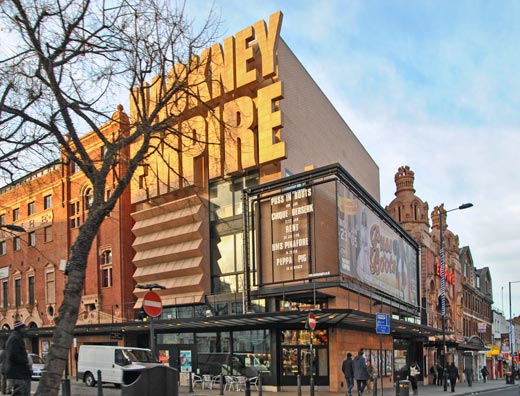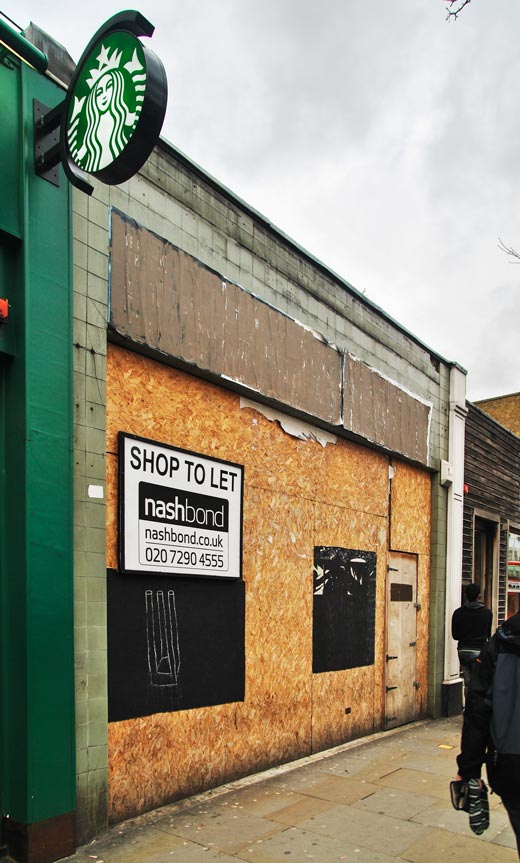The gentrification experience – London and Buffalo
Hackney, East London
I had the delight of living through the full cycle of gentrification in Hackney, London from its late 90’s ‘murder mile’ status, until the full on wine bars and art galleries transformation. It wasn’t always as smooth as people think, but I did notice a number of stock phases and catalysts as the area first moved from being downright edgy (read dangerous), then cool, then acceptable then finally, acceptably dull. Using these prompts, I’d like to share with you my experience, so you can find the goldmine in your own city.
Finding a gentrifying neighbourhood can be a moneymaker for any investor, in any kind of economic cycle. To find a part of town that has gentrification potential, look at the following:
- Has the neighbourhood seen better days?
- Is there an artistic community based in the area?
- Is the local architecture pleasing and/or interesting?
- Are rents low for shops and is there a reasonable mixed-use presence?
- Are there high numbers of ethnic minorities in the area, i.e. is the area a known ‘melting pot’?
You could apply the above to every gentrified London neighbourhood before it gentrified (i.e. Chelsea, Islington, Clerkenwell, Notting Hill, Shoreditch, Hackney…)
And it’s not just a London thing. Cities tend to flow and ebb, with nothing being static. Every city has an area or two at some stage in the cycle. For example, Buffalo’s West Side is currently in the early phases of gentrification, which provides a great opportunity for real estate investors – a large influx of Asian and African refugees has brought colour to the existing mix, and like a pot of fresh paint, shopping, and especially food options previously unknown in Buffalo arrived on the menu (Ethiopian or Burmese anyone?).
This in turn has brought in young middle class homesteaders, as the area becomes ‘hip’ and the artists and creative people can still afford it.
The next phase, once the hipster cafes are established, and ‘creatives’ are ensconced, is the long haul up in house prices, as the boarded up houses get bought for cheap and renovated, and painted purple, the scruffy flophouses get a makeover, and often block by block, the area moves from ‘edgy’ to ‘hip’.
Notting Hill, West London
This process can take ten years to run full cycle, from that amazing new vegan café opening, right up until it closes because the starving artists have been priced out (and so it’s replaced by Starbucks.) By the time it hits the ‘starbucks’ phase (Islington’s Upper Street is a good example) the party’s over, and its time to sell up. You’ll have seen rents double, you’ll have seen houses prices triple, and your yield should have fallen from 15% to 5%. Unless you’re risk profile has reduced somewhat, its time to bail out, head for the next ‘up and coming area’- rinse and repeat.
Gross Yields in West Side Buffalo are right now around 25%. You can pick up a detached Victorian house for $40,000 (here is an example). Two blocks East, across Richmond Road and into trendy Elmwood Village, the same house costs $200,000. In Hackney, London, any kind of detached house would cost over $800,000 (similar story in Williamsburg, Brooklyn…).
Buffalo, New York
Do the maths, and you realise that in fact, you’re not taking much of a risk here. The trendy cafes are here (I’m in one right now, Sweetness 7 on Grant Street, West Side.) The artists are here, the homesteaders are moving west, block by block, throwing out the drug dealers, and pricing out the crackheads, on a relentless march of landscaping gardens, painting and roofing houses, and sanitising the currently funky and creative West Side enough for the inevitable middle class invasion…
 Author Alan W. Findlay is a Partner in Abbotsinch Capital with more than 15 years of experience in real estate investment. To consult your property investment with Alan please email: info at abbotsinchcapital.com or call: +1 716 436 1296.
Author Alan W. Findlay is a Partner in Abbotsinch Capital with more than 15 years of experience in real estate investment. To consult your property investment with Alan please email: info at abbotsinchcapital.com or call: +1 716 436 1296.
Please note that all property prices in this article are subject to change. You should always contact the sales representative for the up to date information.
While every effort has been made to ensure the accuracy of the information presented on this page is up to date and correct, Buildington accepts no responsibility for any errors contained in the information, or if the information is not current.




















